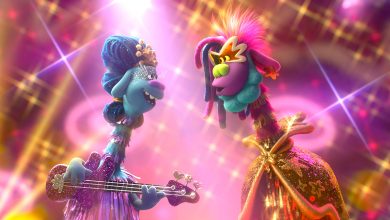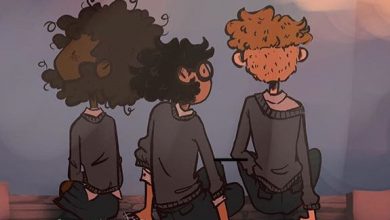
Two children look up to the clouds on a summers day. They gasp in surprise as a face appears to be looking down on them! Is it real? It certainly seems so… How can we tell? Thus begins our second visit with J.R. Becker and illustrator Max Rambaldi’s precocious and curious kids, Annabelle and Aiden in “Oh the Things We Believed” , a children’s book on critical thinking. Like last years “The Story of Life” (reviewed by our own Deek,) this Kickstarter project follows Annabelle and Aiden as they explore a complicated subject with the guidance of a helpful animal companion, this time the colorful and befeathered dinosaur Skeptisaurus.
The book uses the common pareidolia of finding shapes in clouds to explore how our senses and feelings can fool us. One thing I really appreciated is how Becker acknowledges the fallibility of our feelings whilst still respecting them. There isn’t any faux Vulcan hyperskepticism here, no dismissal of a young kids feelings but rather an encouragement to understand those feelings. It’s really interesting emotional intelligence work for a book aimed at preschoolers.
“Before accepting your guess just based on how you feel,
lets admit we just don’t know and discover if it’s real. ”“But discovery takes work and time!
Why search when we just could
accept the answers we made up
like feelings say we should?”“Feelings are important
they add beauty to our life.
But for telling us what’s real outside
they can cause lots of strife.”
And from there Skeptisaurus lays out the simple evolutionary basis for why we evolved to feel and see things that might not be there. With helpful sidebars and wonderful illustrations the book explains how our ancestors who were hyper aware of strange noises were less likely to become someone else’s dinner, how babies who recognized faces smiled back at their parents more often and thus thrived, and how our ancient pre-scientific forbears might have mistook comets for omens of doom or diseases for demonic possession. It even explains the myth of why storks bring babies!
Aiden is resistant at first, which is understandable. As the author shows, we are almost literally hardwired for a certain amount of magical thinking, and magical thinking can be especially comforting to youngsters. There is a scary bit of the story where Aiden retreats from the new knowledge he is encountering and literally falls into the “Gap of Knowledge” and has to be rescued by learning about how science lights the way to true understanding of the world around us.
“And Aiden saw how mystery
can drive us to explore,
and search beyond our guesses that
woo us with thin allure.“I no longer need to fear
monsters under my bed,
or learning what is real and what
is only in my head”“Real learning changes the world
Feelings often fool.
Real answers may not be magic,
but they’re always magical.
As someone who has been reading to little ones for 12 years now, I really enjoyed this book. It’s wonderfully illustrated, packed with quotes and information, yet easy enough for a kid to follow. It really feels like something you could read to a toddler and then again to a seven or eight year old and find both experiences rewarding. If you found Carl Sagan’s A Demon Haunted World helpful to learning skepticism as an adult, I think you can consider Oh, the Things We Believed to be an excellent guide to skepticism for kids. My only minor quibble with this book is that Annabelle doesn’t appear to do much more than watch Aiden as he blunders through his journey to reason. I hope she get’s to take a more active role in their next adventure.
You can find Annabelle and Aiden’s stories at Amazon or follow them on Facebook, I can’t wait to see where they go next.
P.S. I also wanted to bring forward Deek’s excellent advice for reading to young children…
Some suggestions for reading with very young children
- Read it in chunks. While the book works as a long narrative, it also does nicely as single stanzas or pages that are friendlier to toddler attention spans.
- Allow for tangents. Instead of reading it straight through, pause for discussion and exploration when the child’s attention is caught by an idea, word, or image.
- Take time to enjoy the illustrations with your child. Encourage them to “read” the pictures, and talk about what they see.
- Hunt for words and numbers in the pictures. The slips of facts tucked into the illustrations are fun places for pre-readers to search for letters they know and even piece together words.




